
Kansai
Genbudō is the largest of the five caves at this site, part of San-in Kaigan National Park, with other-worldly surfaces of pillar-like ripples formed by…

Kansai
Genbudō is the largest of the five caves at this site, part of San-in Kaigan National Park, with other-worldly surfaces of pillar-like ripples formed by…

Nara
This garden was once part of Kofuku-ji and since 1919 has been a public garden, laid out in traditional fashion along paths around a pond. Most attractive…

Nara
This well-preserved merchant's house in Naramachi, with its lattice front, beamed ceilings, old kitchen, tansu (chest of drawers) stairs and inner garden,…

Nara
Climb the lantern-lined staircase to Nigatsu-dō, a National Treasure from 1669 (originally built c 750). Though the interior is private, the verandah has…

Kii Peninsula
For a close-up look at the falls, hike the 135 steps to this small shrine, which has a viewing platform (it's also the spot from which to worship the…

Kii Peninsula
Part museum, part visitor centre, this contemporary multimedia complex has exhibits about Kumano's culture and natural environment, plus English-speaking…

Kōbe
Kōbe's signature shrine is said to date from 201, though it's been rebuilt many a time – a symbol of resilience for the city. It's right in the middle of…

Nara
Kōfuku-ji's Tōkondō is a National Treasure dating from 726 and rebuilt in 1415 (but paying homage to older structures). It houses several important…

Kōbe
Kōbe's local-history museum, in a Greek-revival-style building dating from 1935, is undergoing major renovations and scheduled to reopen in November 2019.

Nara
Kōfuku-ji's oldest structure is this often-overlooked, elegant three-storey pagoda built in 1181, a rare example of Heian-era architecture.


Nara
Japan's second-tallest pagoda, at 50.1m; originally built in 730 and last reconstructed in 1426.

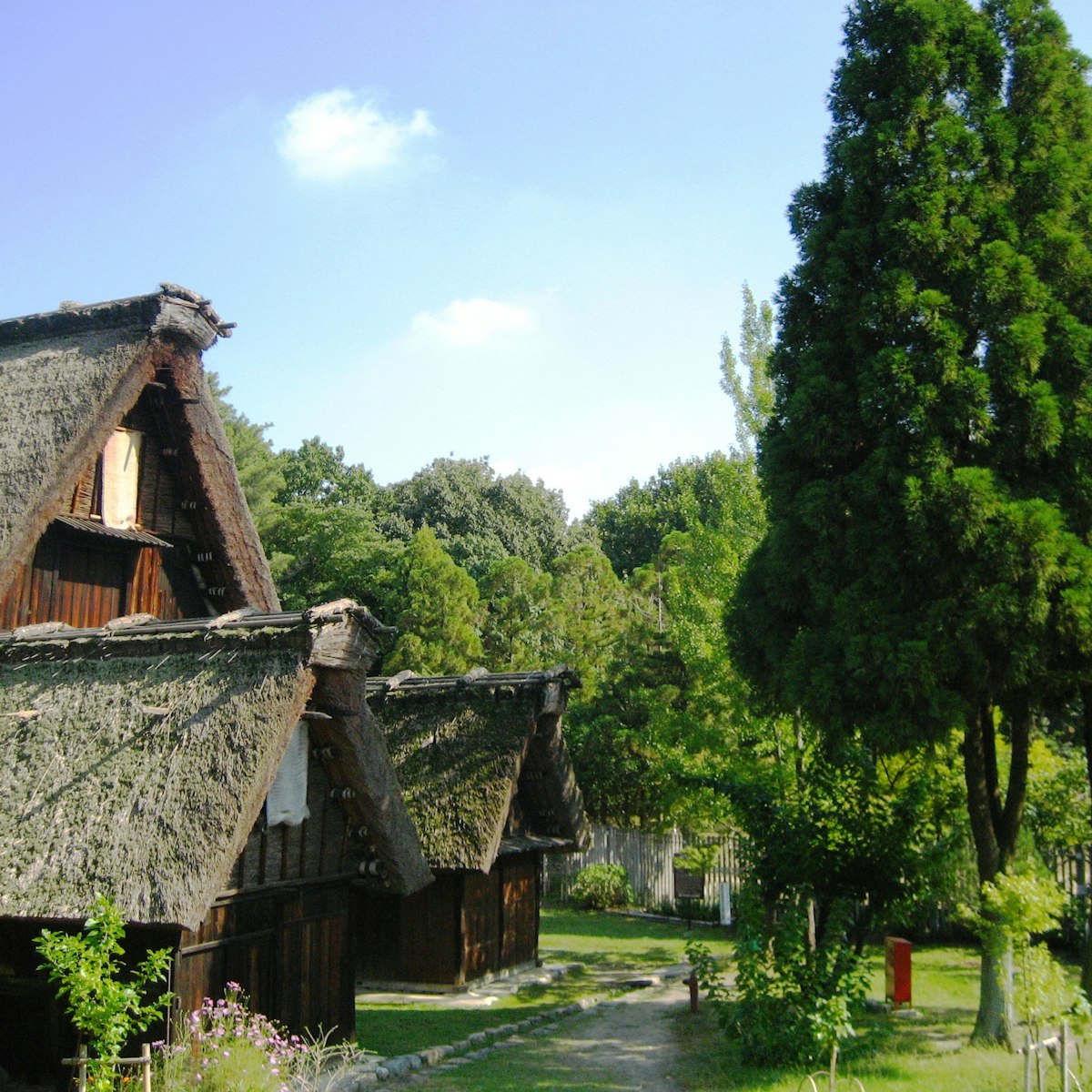
Open-Air Museum of Old Japanese Farmhouses
Osaka
Easier than a trip to the countryside is a visit to this collection of traditional Japanese country houses, transported here and painstakingly…
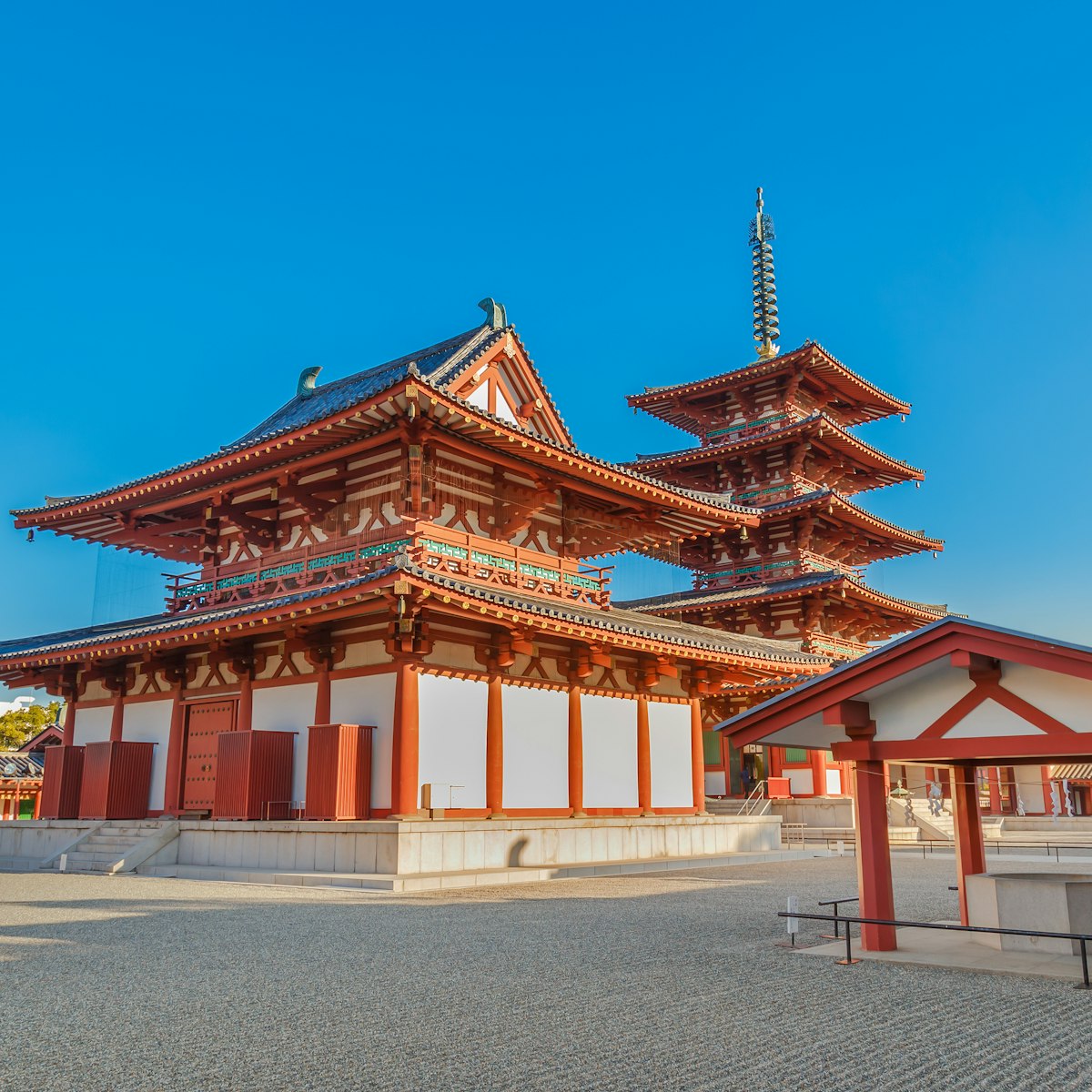
Osaka
Shitennō-ji is one of the oldest Buddhist temples in Japan, said to be founded (in 593) by priest-prince Shotoku-taishi (who first spread Buddhism in…

Osaka
Built above the ruins of Naniwa Palace (c 650), visible through the ground floor, this museum tells Osaka's story from the era of this early palace to the…
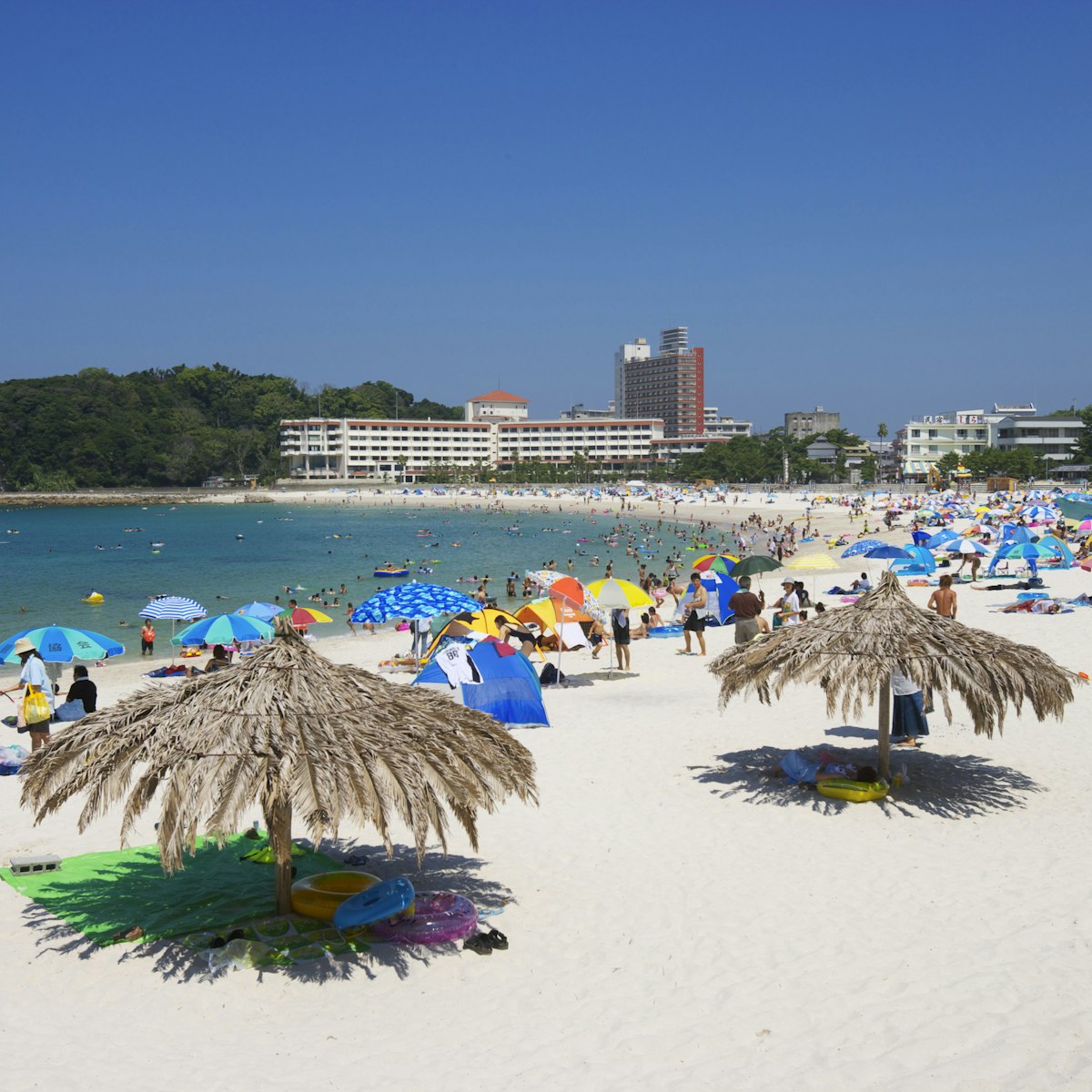
Kii Peninsula
Shirahama's main beach is famous for its white sand – though what's there now was imported from Perth in the '90s, as the original sand was lost to…
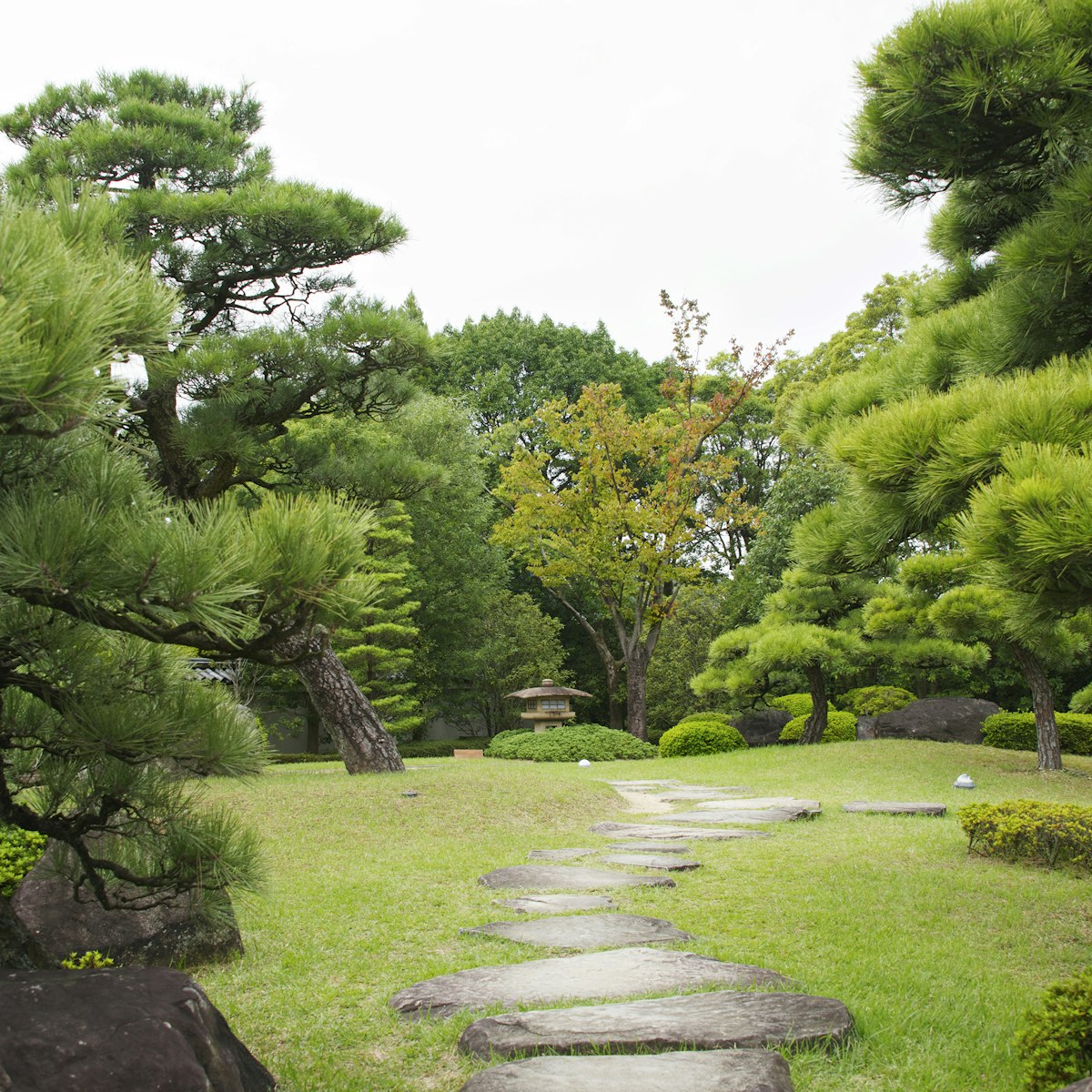
Himeji
This is a modern recreation of an Edo-era samurai residence, with a lovely strolling garden complete with a central pond (filled with koi) and a teahouse …
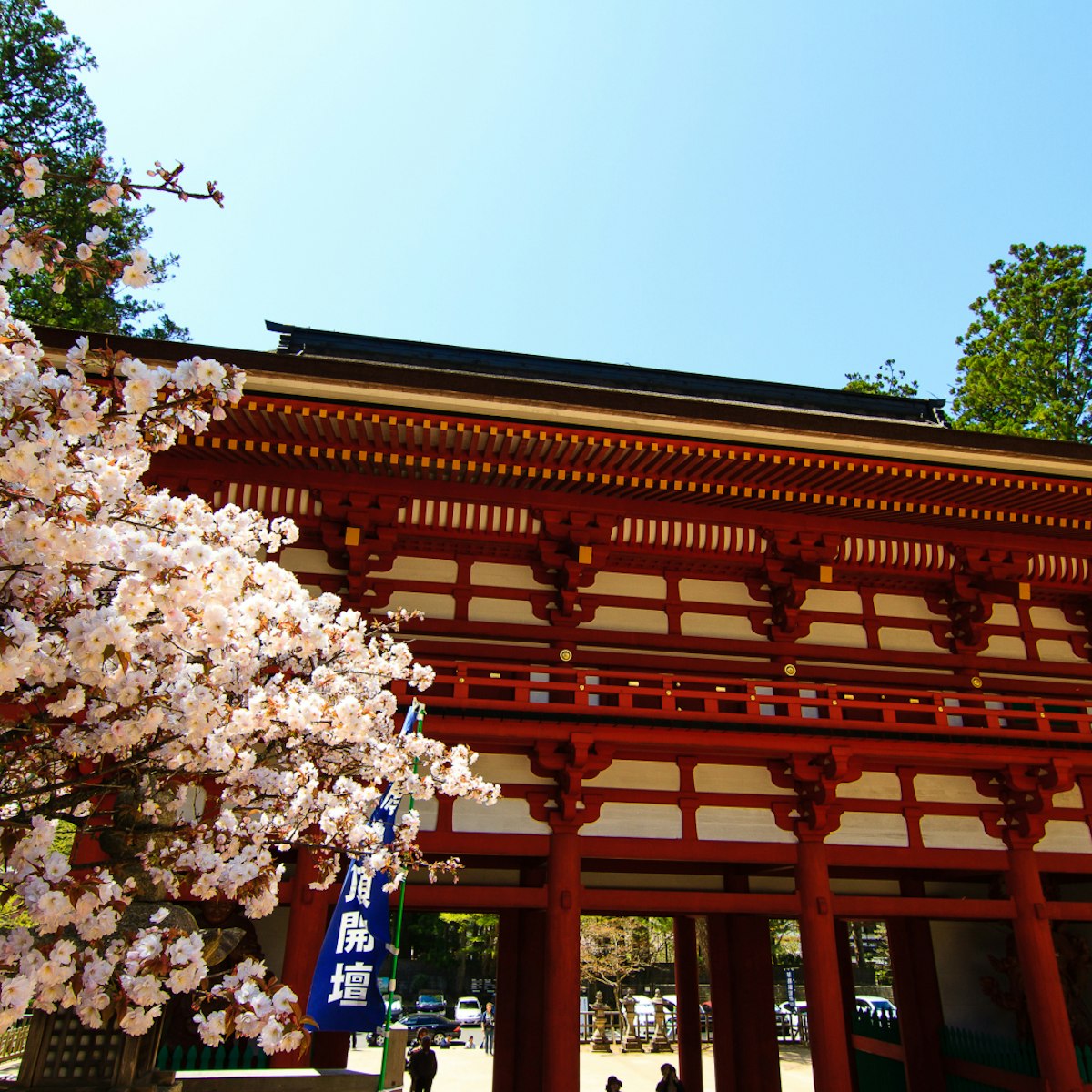
Kii Peninsula
This temple gate was renovated for Kōya-san's 1200th anniversary in 2015, after an 1843 fire. Two of the original statues of guardian kings enshrined in…

Kansai
This remote mountain shrine originated as a mausoleum for Fujiwara Kamatari (614–69), the patriarch of the Fujiwara clan that would rule court politics…

Kii Peninsula
In 1890 the Turkish ship Ertuğrul, returning from a diplomatic mission between the Ottoman and Japanese empires, sunk off the rocky coast of Kii – a…

Kōbe
Completed in 1998, Akashi Kaikyō, west of central Kōbe, can still claim the title of world's longest suspension bridge (based on its main span, which…

Kōbe
Kōbe's Chinatown – Nankin comes from Nanjing; machi just means town – dates to the early days of the city opening its port to foreign traders. It was…

Kii Peninsula
Though Japan was famously closed to most foreign traders for 200 years between the mid-17th and mid-19th centuries, that doesn't mean people didn't try to…

Osaka
Originally built for Expo '70, this underground construction by architect Cesar Pelli now houses Japan's fourth national museum. The building – like a…

Osaka
When Tsūten-kaku was first built in 1912, it was, at 63m high, the second tallest structure in Asia and the pride of Osaka. Damaged by fire in 1943, it…

Osaka
Ever-smiling (and a bit creepy looking) Billiken sits, toes out, like a golden Kewpie doll on a pedestal reading 'The God of Things as they Ought to Be'…

Kansai
This shrine was built in 1889 on the site where it was proposed that Japan's mythical first emperor, Jimmu, ascended to the throne. Its founding was part…

Osaka
Nicknamed 'Ebessan', this famous shrine is said to have been founded by Japan's most revered historical figure, the priest-prince Shotoku-taishi, c AD 600…

Kii Peninsula
The last of the five major ōji (smaller shrines along the Kumano Kodō) before Kumano Hongū Taisha, Hosshinmon-ōji marks the outer limits of the grand…

Kii Peninsula
Takijiri-ōji is one of five major ōji (smaller shrines along the Kumano Kodō). It marks the beginning of the passage into the mountains and today serves…

Osaka
Japan's largest covered shopping arcade, which began as a wet market during the Edo period (1604–1868), stretches 2.6km over six blocks. The majority of…

Osaka Museum of Housing & Living
Osaka
Two subway stops from Umeda, this museum contains a life-sized reproduction of an 1830s Osaka neighbourhood with shophouses, drug stores, an old-style…

Kansai
Kurokabe means 'black walls' and many of the stucco shopfronts in this historic district are charcoal grey. The shops themselves sell craft and takeaway…

Osaka
Japan's first human rights museum began in 1985 as an archive of documents relating to the burakumin – the lowest caste under the old feudal system …

Kansai
This landscaped garden, inspired by an ancient Chinese garden and criss-crossed by waterways and wooden bridges, was created in the 17th century by the…

Kansai
Steps from the southern end of the Amanohashidate footbridge, this busy temple is home to an Important Cultural Property pagoda from the Muromachi period …

Osaka
Founded in the 10th century, this shrine is where Osaka students come to pray for success: it's dedicated to Sugawara Michizane, also known as Tenjin-san,…

Kii Peninsula
These adjacent mausoleums were completed in 1643 at the behest of the third Tokugawa shogun, Tokugawa Iemitsu, for his grandfather, Tokugawa Ieyasu, and…

Nunobiki Herb Gardens & Ropeway
Kōbe
Escape the city on a 400m-high mountain ridge, offering sweeping views across town to the bay. During the day (to 5pm) you can descend on foot through the…